Acquiring one of the best ESAB welding helmets is going to be an essential tool for every type of welding method. They are used for protecting the eyes and face of the welders from flames, sparks, fumes and debris.
The ESAB Sentinel A50 is by far the best helmet the ESAB company has to offer, and this is why it is one of our top rated auto darkening helmets and our no.1 choice. It has an excellent, highly professional and unique design, one of the largest viewing areas in the market an awesome, fast-responding ADF.
In this article, we have gathered some useful information about the best ESAB welding helmet models, four of which auto darkening and one is a passive helmet. We analyze pros and cons along with their features, and recommend best welding helmet you need to acquire in order to work properly on your projects.
Best ESAB Welding Helmets
The role of the ESAB helmets is to keep your eyes and face protected regardless of the project that takes place. In the list below, we have gathered 5 of the best ESAB welding helmets, and we analyze their specifications and features.
1 – ESAB SENTINEL A50
- Revolutionary Shell Design - High Impact...
- Halo Headgear - Ergonomic, Infinitely-Adjustable 5...
- Low-profile design, central pivot pot allows for...
- Color Touch Screen Control Panel With 8 Separate...
- Hard Hat Adapter Option Available For Use With...
The particular auto darkening welding helmet is one of the best models manufactured by the ESAB Company, and of course my top pick regarding working with aluminum metals. Regarding its weight, the ESAB SENTINEL A50 is extremely light, which makes it convenient to work with in various positions.
It work with a lithium battery, which is replaceable and adds a lot of time to the longevity of the particular welding helmet. There are 2 arc sensors on the welding helmet, grind mode, and it has the necessary sensitivity and delay controls for manual adjustments.
You can adapt a hard hat on the welding helmet for extra protection, and it also has a magnifying cheater lens. All in all, the ESAB SENTINEL A50 which you can find on Amazon, is my go-to option when it comes to welding or soldering aluminum.
2 – ESAB Warrior
- External shade adjustment between DIN 9 and DIN 13...
- Delay and sensitivity can be adjusted from the...
- Four arc sensors for higher response and wider...
- Wider field of vision and increased spatial...
- Sensitivity control is an adaptable feature useful...
My second choice regarding welding helmets suitable for almost all welding applications, is the ESAB Warrior which you can find here. It has to be mentioned, that apart from its features, it has one of the greatest designs I have ever seen on a welding helmet.
I prefer this welding helmet for welding and soldering aluminum, although admittedly it can be used for all types of welding processes, such as MIG, TIG or stick arc welding. It is made of extremely sturdy material, and its effectiveness is guaranteed over time.
It has a fairly large viewing area, and you can adjust the response time to your liking by using the light sensitivity and delay controls placed on the helmet. In my opinion, the ESAB Warrior works great for aluminum welding being comfortable and effective.
3 – ESAB Firepower Stars and Stripes
- Four Arc Sensors for High Response
- Shade Levels 9 to 13
- HELMET ANGLE ADJUSTMENT 3 positions to select...
- SPATTER GUARD to protect chin and lower neck
- SOLAR PANELS | AUTO-DARKENING FILTER also provides...
One of the greatest of its kind, the ESAB Firepower Stars and Stripes works amazingly well with aluminum applications that require convenience and high quality optical clarity. Unlike the majority of its competitors, it has a rounded perimeter, which offers larger viewing area and enhances the workflow of the welder.
It very lightweight, although it has all the essential light sensitivity and delay controls which can be combined to satisfy even the most demanding welder. It can take some time to learn the controls as you will need to experiment with them, but it gets pretty easy after some time.
The ESAB Firepower Stars and Stripes which you can find on Amazon, works with solar power and has one of the fastest response time as far as the Auto Darkening Filter is concerned. A magnificent auto darkening welding helmet for aluminum gas welding.
4 – ESAB A30
- Genuine ESAB Welding Helmet in Matte Black....
- Variable shades ADF from 9 to 13 and Grinding...
- Two sensors for extra accuracy - Delay and...
- Ergonomic Head Gear with Swetpad and One-Hand...
- Electronic Filter complies with ANSI Z87.1, CSA...
Another awesome auto darkening welding helmet from one of the most trustful manufacturers in the field. The ESAB A30, which you can find here for more information, is a one of the best solutions when it comes to aluminum soldering and of course any other type of welding process.
The optical clarity the particular welding helmet model offers is considered top-notch. It has one of the largest viewing areas I have ever used, and every upgrade of the model comes with improved optic features that make the work of the welder even more comfortable than before.
For the welders that aluminum soldering is one of their usual tasks, keep in mind that the ESAB A30 offers realistic and more natural colors than any other similar competing welding helmet, which will make the process as easy as it gets.
5 – ESAB Firepower Fixed Shade
- Streamlined, compact design that allows welders to...
- Shade 10 lens measures 4.5" x 5.25" and flips up...
- Ratchet headgear with Sweatband for a secure,...
- Meets or exceeds ANSI z87-1, CE and various...
- Color: black
For the welders that are on a significantly tight budget, the ESAB Firepower Fixed Shade is the ideal choice. It costs way under $100 and has all the standard features and specifications that will allow the welder to work effectively with a passive welding helmet.
This low-priced fixed shade welding helmets by ESAB has no arc sensors, since it is not an auto darkening helmet. The lens of the helmet on the other hand is crispy clear, especially considering its price, and is highly capable of protecting the eyes of the welder from arcs and flashes.
The ESAB Firepower Fixed Shade which you can find on Amazon, is very lightweight and wears comfortably on the head, while keeping in position and protecting the neck at the same time. If you are on a limited budget and want to weld or solder aluminum, I consider this welding helmet one of the best solutions in the market.
Why you need an ESAB welding helmet
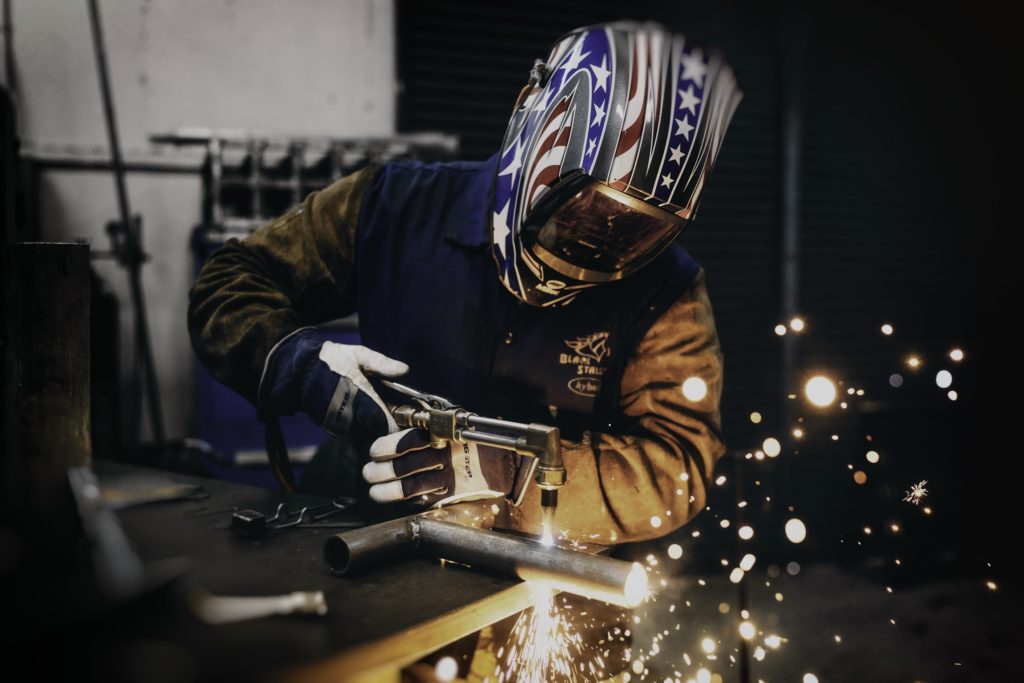 Being a welder, you might need to decide choosing between different types of auto darkening welding helmets. ESAB welding helmets are an essential kind of head gear for welders, because of their ability to recharge their non-replaceable batteries by utilizing the power of sun with the help of solar panels.
Being a welder, you might need to decide choosing between different types of auto darkening welding helmets. ESAB welding helmets are an essential kind of head gear for welders, because of their ability to recharge their non-replaceable batteries by utilizing the power of sun with the help of solar panels.
If you are a beginner in the welding industry, you could get confused when you hear the term solar powered helmet. Most people, assume that this type of welding helmets does not use any batteries at all, depending only on the solar panels, which is a false assumption.
Solar powered welding helmets use both solar panels and batteries which are placed in the inside part of the helmet, storing the solar energy in order to provide energy to the helmet. Below, we have gathered detailed information about how solar powered welding helmets work, their pros and cons and how to take full advantage of them for more convenient weldings.
Firstly, check out these 3 impressive ESAB welding helmets:
Are ESAB helmets solar powered?
No, the ESAB welding helmets are not solar powered. They required the installation of 2 lithium metal batteries in order to function, such as the ESAB Sentinel A50. Keep in mind that the batteries are not included in the package.
How do solar welding helmets work?
 The common mistake many welders make when they are about to purchase a solar powered helmet, is the fact that they believe that such welding helmets do not require batteries in order to function. This assumption is of course not valid, since they use both solar panels to capture solar energy and charge their batteries with it.
The common mistake many welders make when they are about to purchase a solar powered helmet, is the fact that they believe that such welding helmets do not require batteries in order to function. This assumption is of course not valid, since they use both solar panels to capture solar energy and charge their batteries with it.
The role of the battery is to provide the initial power to help the welding helmet start functioning. This way, when the arc is activated, the batteries initiate too, and they provide the essential power to the auto darkening filter.
After the activation of the arc, the solar panels (or photovoltaic panels) are then powered by the ultraviolet rays (UV), which are used in order to feed with power the electronics of the welding helmet. This way, the battery has the ability to last longer and can be recharged once placed under the sun for sufficient amount of time.
Essentially, solar power has proven to be a major advantage for the welding industry, since it is one of the most efficient ways of providing power for the ADF. The combination of photovoltaic cells and the evolution of the welding helmet electronics, has helped to created highly functional auto darkening welding helmet models, without the need for replacing their batteries.
Why you should use solar powered welding helmets
There lots of reasons regarding why you should take advantage of solar power when it comes to welding helmets. A solar powered helmet of high quality, such as the Antra AH7-860-0000 which you can find here, might be a very economical way to weld, since you don’t have to spend extra money buying new batteries for your welding helmet.
What is more, the lifetime of the welding helmet is a lot bigger compared to the rest of the competition. The reason why, is the fact that the bigger part of the power is taken by the solar cells, while the batteries are there only to provide power for the initial charging of the helmet.
As far as automation is concerned, the majority of the solar powered welding helmets have been designed in such a way, that they allow the welder to focus on the welding process rather that manually handling the controls of the helmet (although they do need some manual adjustments for more precise results).
This is especially helpful both for professionals and amateurs. For beginners, the high automation levels of solar powered welding helmets will assist them in the learning stages, by preventing accidents due to lack of experience or knowledge.
What type of batteries to use with solar powered helmets?
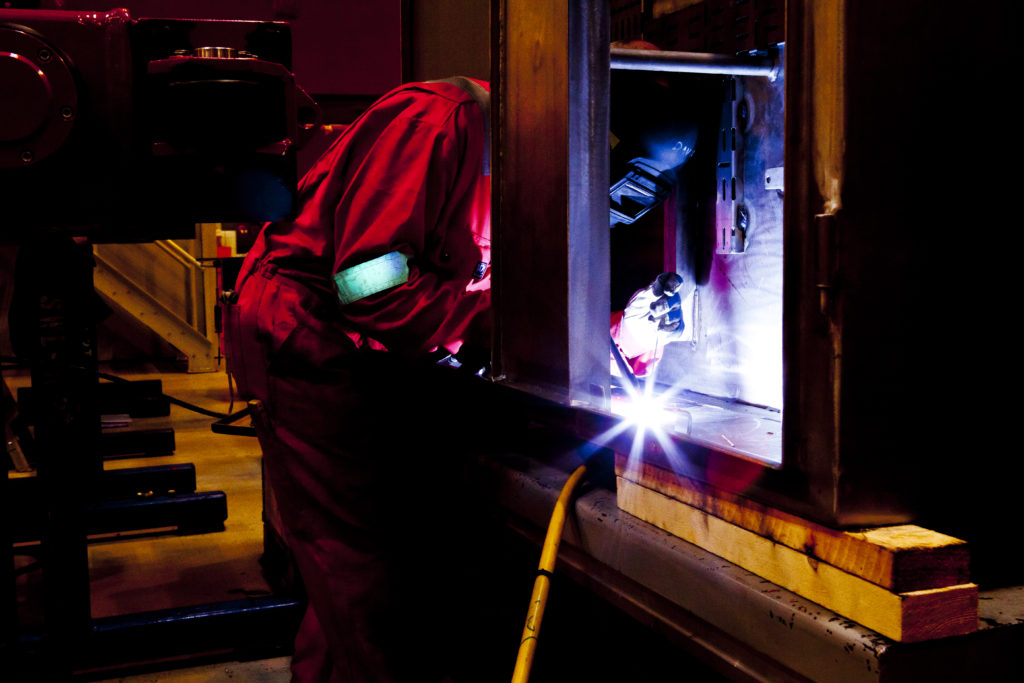 My recommendation would be to look for welding helmets which use both solar power and replaceable batteries. A great example is the Dekopro Solar Powered Welding Helmet, which uses lithium batteries for more effective charging, while allowing you to replace the battery when needed.
My recommendation would be to look for welding helmets which use both solar power and replaceable batteries. A great example is the Dekopro Solar Powered Welding Helmet, which uses lithium batteries for more effective charging, while allowing you to replace the battery when needed.
Fixed batteries are not usually the smartest choice, since you cannot change them. This is the reason why such welding helmets tend to be a lot cheaper, although they could be used if you need to test solar powered helmets and you don’t want to invest large amount of money.
The lifespan of lithium batteries that newer solar powered helmet models use, is around 1 to 2 years. For more intensive use, the batteries might last a little less before you need to replace them, although 1 year is the average time needed to do so.
If you own a solar powered helmet, it is a good idea to store some replacement batteries for when needed. This way, you can avoid having to stop in the middle of your welding process because of lack of power.
On the other hand, if you acquire a model with fixed batteries, make sure that you invest in a high quality manufacturer. This way, you will be able to take advantage of the welding helmet for long periods of time, since the batteries of such welding helmets tend to last around 5 years. Make sure that you refer to the user manual for proper charging.
What to consider before buying a solar powered welding helmet
 Although fixed-battery welding helmets are a nice option too, replaceable batteries provide lots of flexibility and guarantee that you will be able to use the helmet for more years. What is more, they are pretty easy to find in the large marketplaces, and they come in affordable prices.
Although fixed-battery welding helmets are a nice option too, replaceable batteries provide lots of flexibility and guarantee that you will be able to use the helmet for more years. What is more, they are pretty easy to find in the large marketplaces, and they come in affordable prices.
Lithium batteries are more expensive than AAA batteries. You have to keep this in mind before choosing a solar powered welding helmet, since their prices differ significantly. That said, lithium batteries last much longer in comparison to AAA batteries, which means that you wont need to replace them regularly.
Let the solar powered welding helmet charge sufficiently before you start welding. You need to make sure that you leave your solar helmet under the sun for as long as it needs in order to recharge fully. Insufficient charging will lead to less power, and unwanted interruptions.
The automatic features are one of the main advantages for solar powered helmets. The off function, is another awesome feature, which will save you lots of otherwise wasted battery life. Make sure that you look for a welding helmet with the particular option to save time and spend less money into batteries.
Should you buy an ESAB welding helmet?
The short answer is yes. The ESAB welding helmets are an excellent option foe every welder, no matter the welding method you use or the location of your workplace.
They are great for those on tight budgets (especially helmets with fixed batteries), and they are very user friendly due to their automation features that allow you to focus on your weldings, without having to worry about keeping your helmet functional all the time.
What use ESAB welding helmets with Aluminum?
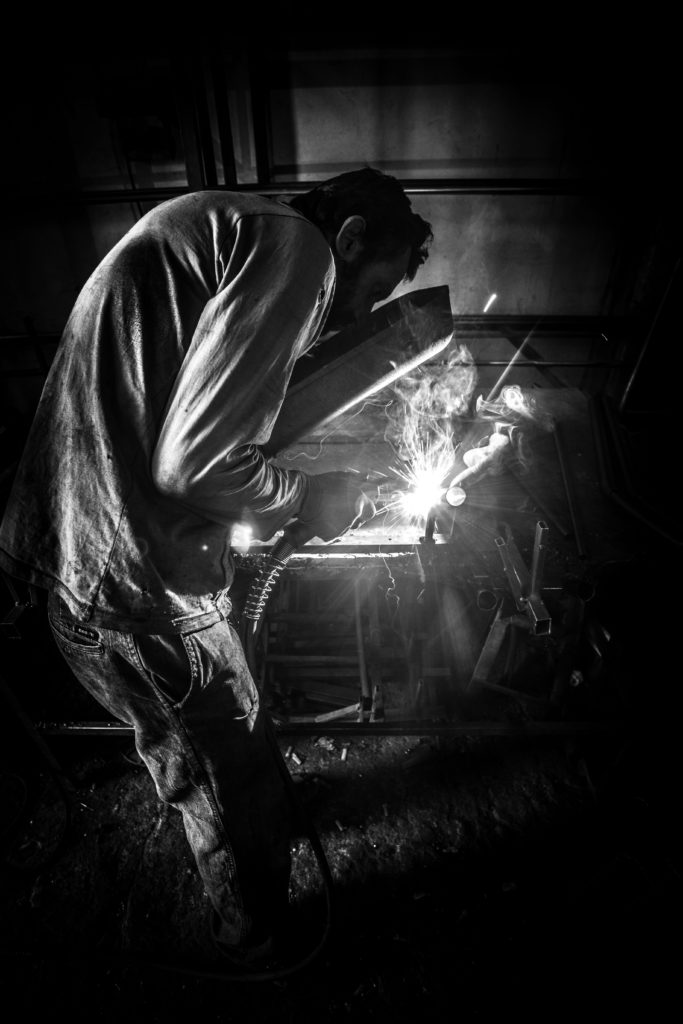 Aluminum is a metal which is mainly characterized as soft, and extremely lightweight. It is one of the metals with low level strength, and can be easily handled for welding processes, forging and take various forms.
Aluminum is a metal which is mainly characterized as soft, and extremely lightweight. It is one of the metals with low level strength, and can be easily handled for welding processes, forging and take various forms.
These facts, make it one of the best options for a wide variety of industries, as it can be easily used for different projects and commercial constructions. In order to take full advantage of aluminum, you need to use it only in applications that require low temperatures. To extend its use, you need to alloy aluminum with other elements.
ESAB welding helmets work great for Aluminum welding processes, since they offer high eye and face protection, and they sit very comfortably on any type of head. What is more, their optical clarity is top notch, allowing the welder to work accurately on metal joints with causing fatigue.
Being one of the most common metals, welders can use a variety of techniques and equipment in order to join, weld or solder it. In most cases, those welding techniques and equipment are the same ones used for other types of metals. For instance, the MIG welding method. For more complex aluminum constructions, welders may need to use additional techniques or more specific equipment.
The process that is going to be used by the welder for aluminum welding or soldering, depends on various factors such as the alloy, the appearance or the strength of the metal. As always, there are advantages and disadvantages that follow each process.
The characteristic color of aluminum is silver. It gets shiny after being polished, which makes it aye appealing. On the other hand, the silver color of the metal gets fairly dull after oxidization. As far as its popularity is concerned, aluminum is considered to be the second most popular metal in the welding world.
How to MIG weld aluminum
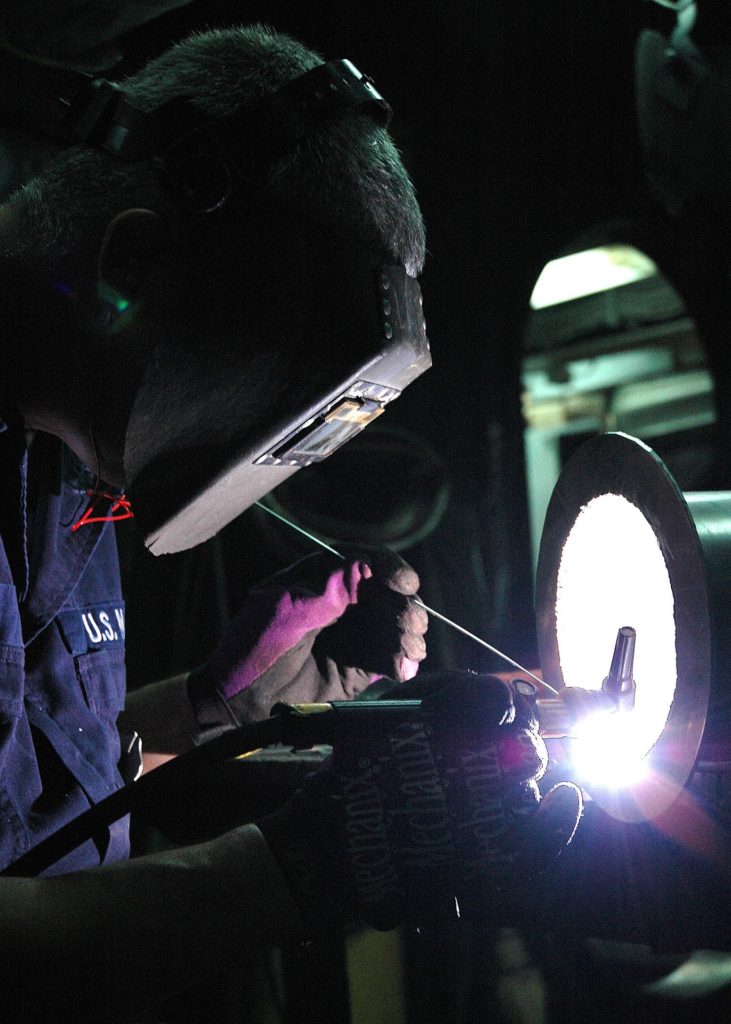 Gas Metal Arc Welding or GMAW is one of the fastest processes when it comes to aluminum. You can adapt the particular metal to almost any type of use very easily, by applying direct current reverse polarity.
Gas Metal Arc Welding or GMAW is one of the fastest processes when it comes to aluminum. You can adapt the particular metal to almost any type of use very easily, by applying direct current reverse polarity.
Along with the reverse polarity, you need to use inert gas, in order to be able to weld aluminum of any thickness, especially types that are thicker than usual. Keep in mind, that every welder should be especially cautious when using the particular process, if he wants to achieve nice results.
When welding aluminum metals, you can use helium or argon. In addition to this, you can use a mixture of those two gases, which is far more efficient for some structures. When the two gases are compared, we can understand that helium produces a less stable welding arc than argon, although it can penetrate the metal deeper and produce a hotter arc than argon too.
As far as the penetration and the bead profile of the metal is concerned, we get different results from both gases. This is why they are used in various types of welding processes, and the welder needs to know which welding projects are best for which of the two gases.
Helium. The bead that we get with helium is flatter than the one that we get with argon. Its wider shape goes along with the wider penetration pattern that follows.
Argon. Argon has the ability to provide us a narrow bead, with higher levels of complexity. The penetration pattern differs from that of helium too. It is deeply concentrated in the center.
If the welder wants to take advantage of both gases, he must create a mixture. The ideal way to do so, is by using 75% helium to 25% argon. This way, he can get the best characteristics of both gases, and avoid misuses and undesired results like when they get used separately.
What we are going to get by this mixture, is the penetration pattern and bead of both gases, which is our intention. Also, we are going to have high arc stability that is mainly a characteristic of argon, which is going to help us achieve better and more convenient welds.
It is very important to use the welding gun or the torch at an appropriate angle when welding aluminum metal with inert gas. The best way to operate the torch, is by keeping it steady at a 30º angle. This way, you are going to get the best out of it.
Regarding the electrode wire and the welding table, there also some specifications you should follow. The electrode wire tip used for aluminum welding is usually oversize, and a welding table like the Strong Hand Tools Nomad Welding Table would be a nice solution.
How to solder Aluminum
 The techniques used to solder aluminum are similar to the techniques used for soldering other types of metals too. Two of the most common methods used to solder aluminum is reaction and abrasion. These two types of soldering are mostly used for aluminum than for other metals.
The techniques used to solder aluminum are similar to the techniques used for soldering other types of metals too. Two of the most common methods used to solder aluminum is reaction and abrasion. These two types of soldering are mostly used for aluminum than for other metals.
As far as the joint design is concerned, simple lap and T-type joints are the most used when it comes to soldering aluminum. Flux composition, alloy base composition, solder composition and joint design are some of the factors that joint clearance depends on.
The welder has to clean the surface of the aluminum before the soldering starts taking place. Remaining materials and dirtiness have to be remove carefully before the process, and the welder has to make sure that the surface is completely clean to ensure the effectiveness of the soldering.
For the cleaning process, the welder can use steel wool such as the Red Devil 0321 Steel Wool, or a stainless steel brush such as the 6 Pieces Mini Stainless Steel Wire Brush Set which you can find on Amazon. Both products are very affordable and easy to find.
In order to bring the area we want to join in the right soldering temperature, the welder needs to find and use a heat source of large capacity. The reason why, is because of the high quality thermal conductivity and the melting point solders that are higher when we want to join aluminum.
There must be properly controlled heat in order to achieve this. The welder must cover the specific material with a molten puddle of solder for better results, when the time comes to tin the surface of the aluminum metal.
After this process, he must scrub the surface of the metal with an item which has the ability to absorb and is not heated. Such items that are ideal, are glass fiber brushes such as the Economy Scratch Brush, fiber block such as the MagJo Naturals Compressed Coco Fiber Peat 11-Pound Block or wooden sticks.
Conclusion
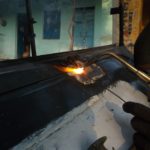 To sum up, the ESAB welding helmets are a great option for every welder that want to purchase a highly effective helmet in a very affordable price. That said, our recommendation is the priciest one, the ESAB Sentinel A50, but for many good reasons that we have stated above.
To sum up, the ESAB welding helmets are a great option for every welder that want to purchase a highly effective helmet in a very affordable price. That said, our recommendation is the priciest one, the ESAB Sentinel A50, but for many good reasons that we have stated above.
In this article, we analyzed 5 of the best ESAB welding helmets suitable for welding applications that will provide protection and convenience to the welder. Now it is up to you to make your own research and the models you prefer in order to decide which one is best for you. Keep welding!





